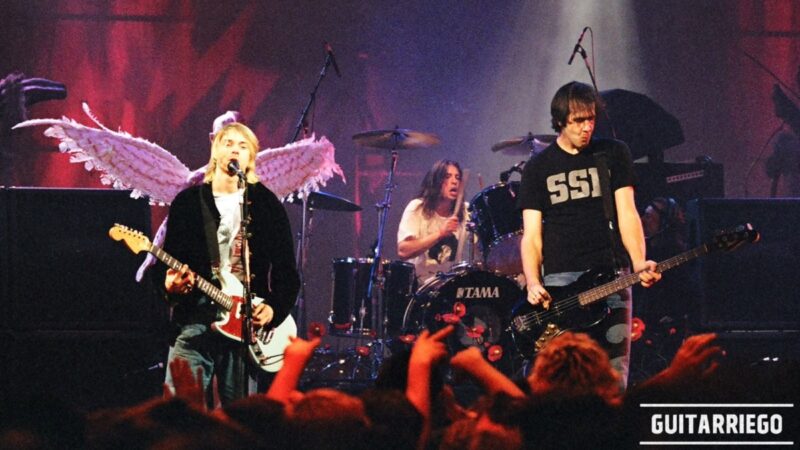10 facts about the guitar that will blow your mind
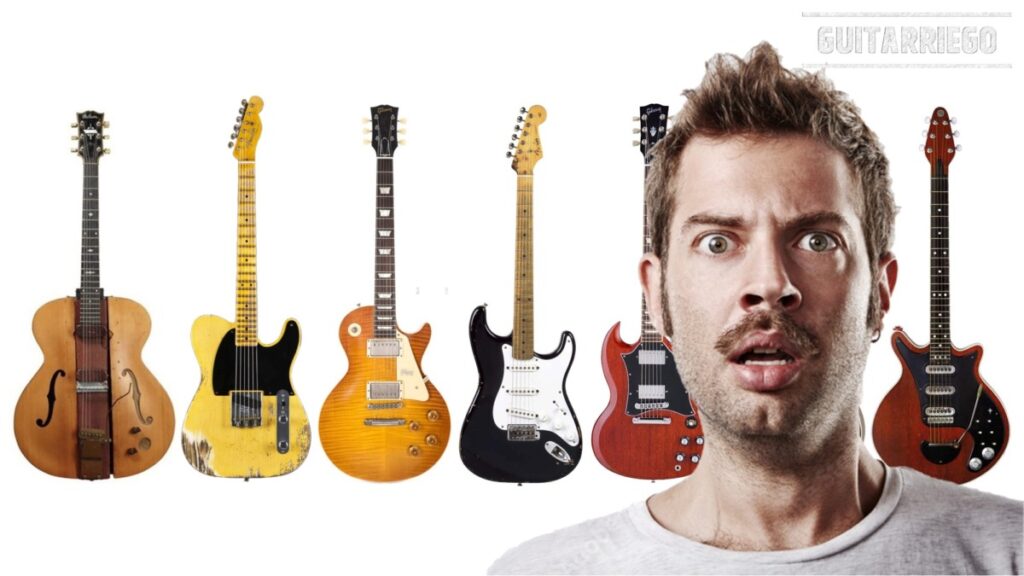
These 10 amazing facts about the history of the electric guitar will blow your mind, including curiosities about Fender, Gibson, Marshall, Epiphone and much more.
10 Awesome Facts You Probably Didn’t Know About Electric Guitars And Amplifiers
Do you love electric guitar? Are you interested in curious facts and surprising anecdotes about this versatile and popular instrument? In this post, we present you with 10 amazing facts about the history and use of guitars that are sure to blow your mind. From trivia involving Leo Fender, Les Paul, Eric Clapton, Brian May, Jim Marshall and much more, we’re sure you’ll learn something new and fascinating about the electric guitar and its history.
So if you want to know more about this wonderful instrument, keep reading!
Gibson may have been the first solid-body electric guitar maker
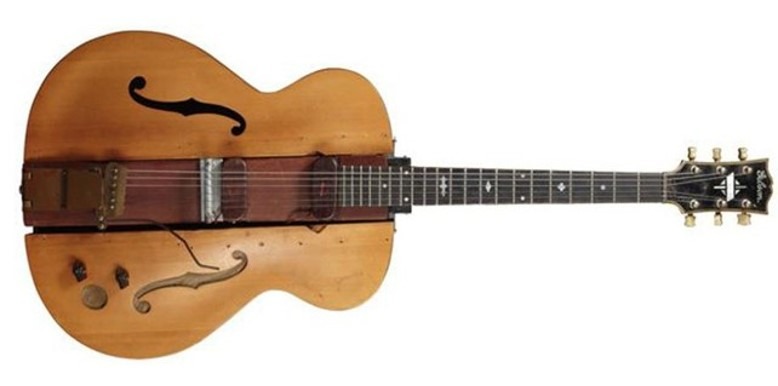
In 1946, innovative musician and guitarist Les Paul met with Gibson management with the goal of building a solid-bodied guitar. For this he brought the famous solid body guitar called “The Log”as a prototype and persuasion tool. However, the company’s president at the time, Maurice H. Berlin, rejected Les Paul‘s proposal, calling the guitar “that broom”. A decision that they would regret five years later. In 1951, Ted McCarty, company president and great inventor, at the helm of Gibson would respond with a new guitar that would bear the artist’s name, the Gibson Les Paul.
If you want to know more, visit our article on the history of the guitar, from classical to electric.
Les Paul first owned a Fender Telecaster before he owned a Gibson Les Paul
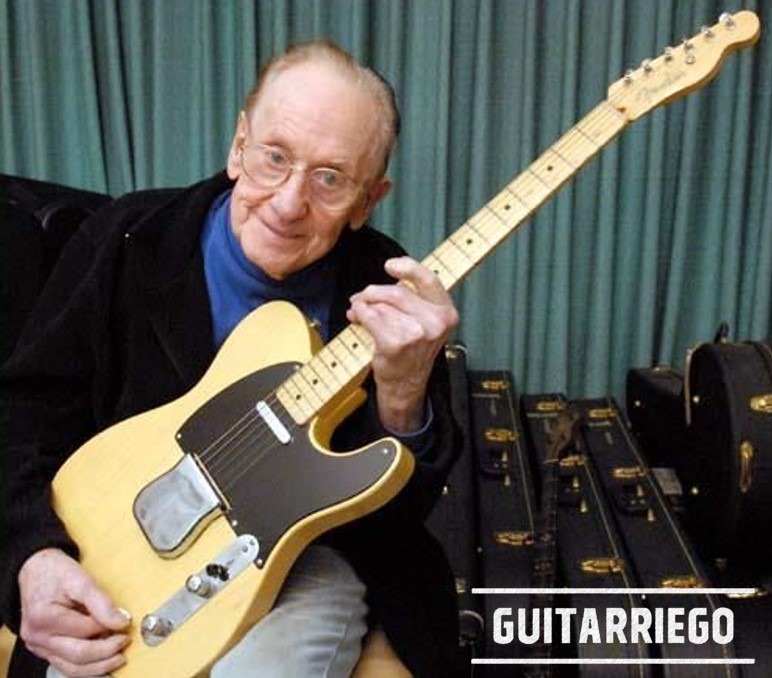
In early 1951, Les Paul was the most popular “electric” guitarist in the United States. Leo Fender and Don Randall, who would later become Fender’s president, tried to seduce Les Paul into becoming a Fender endorser.
Thus, in June 1951, Randall visited the musician in Los Angeles and left him a Butterscotch Telecaster guitar, at the time a “Nocaster” and a Pro Amp amplifier for him to try out. However, Les showed no interest in a new and little-known brand and a guitar that he saw as more of a prototype too simple for his style. In addition, Les Paul always wanted to work with Gibson, so he took it upon himself to keep a secret that there was a Fender in his guitar collection.
If you want to know more, don’t miss our article on the rivalry between Fender and Gibson, between Leo and Les Paul.
Fender was an amplifier manufacturer on the brink of meltdown
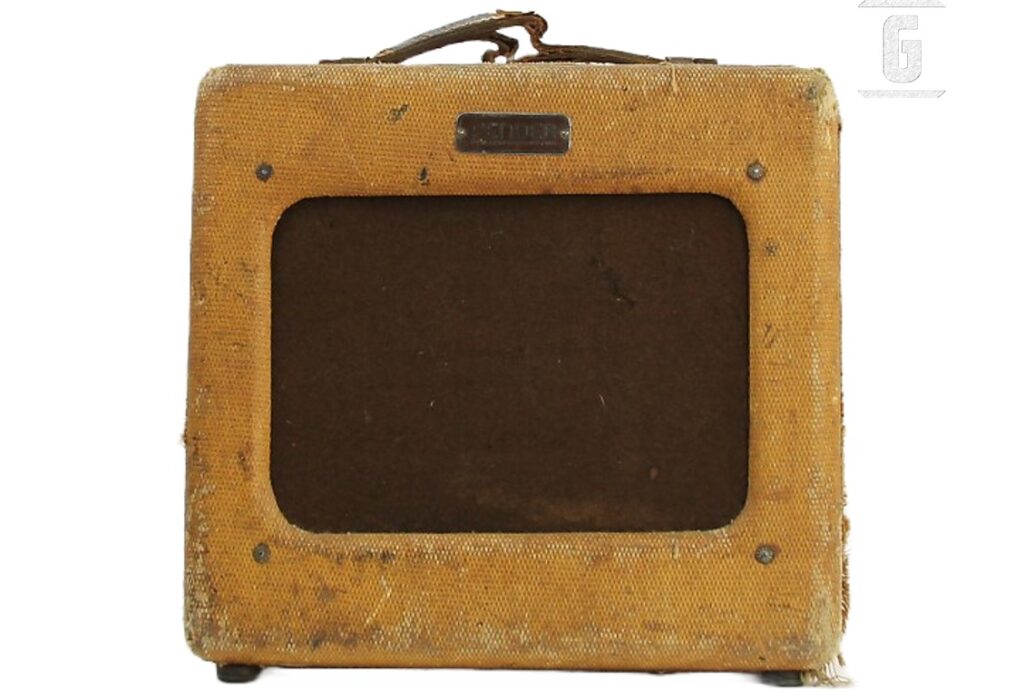
Leo Fender was an amplifier manufacturer that came close to bankruptcy several times because its market was too small. Therefore, in order to expand his sales, Leo Fender decided to design and manufacture electric guitars that can be used with his amplifiers. Years later the guitars that he designed and began to market by Fender would transform the history of music.
The first mass-produced solid-body electric guitar was not the Fender Telecaster
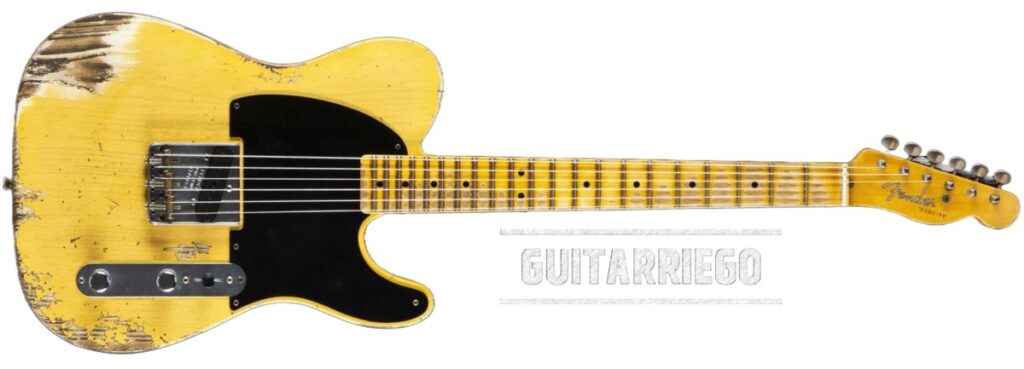
We all have in mind that the Fender Telecaster, or Broadcaster as it was originally called, was the first guitar that Fender launched on the market. However, this is not the case, since the first guitar marketed by Fender is the version with a single pickup in the bridge position, known as the Esquire -not to be confused with Squier-. This guitar was the first to be marketed, although the Broadcaster, now known as the Telecaster, was launched very soon, the reality is that the Fender Esquire was the first mass-marketed solid-body electric guitar.
The Les Paul is not the best-selling electric guitar in Gibson history
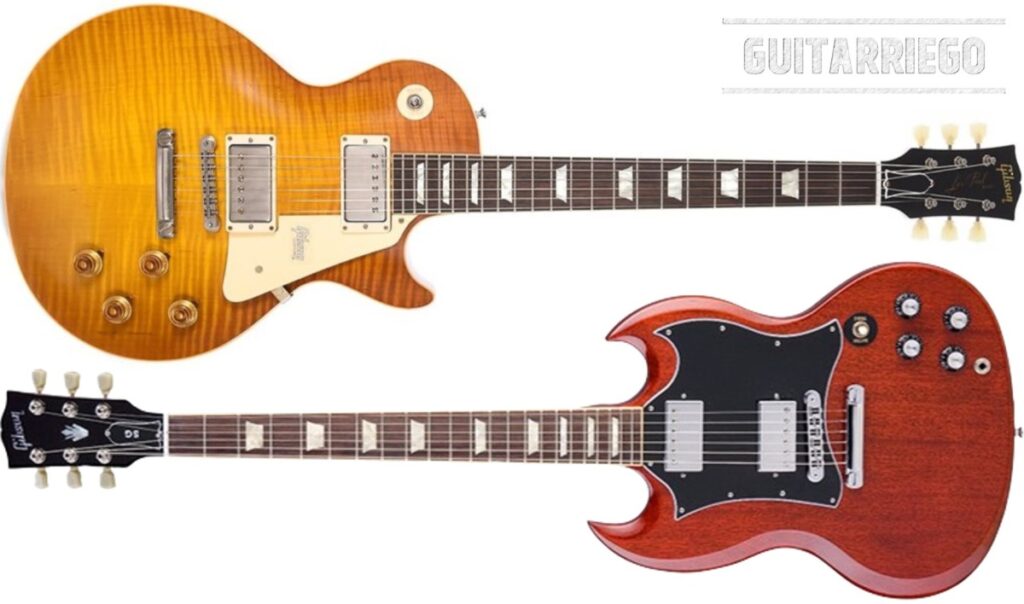
While the Gibson Les Paul is the most popular and iconic solid body electric guitar from the most traditional brand of guitars. This is not Gibson’s best selling model. The Gibson Les Paul was released in 1952 and was the first solid-body guitar released, but it was discontinued in 1960 due to a sharp drop in sales. In its replacement, a more modern version of the Gibson guitar was released at the end of 1960, today known as the SG, initials for Solid Guitar.
It wasn’t until 1969 that two reissues of the Gibson Les Paul would be released, a Custom version and a Deluxe version with mini-humbucker pickups that were a carryover from Epiphone stock.
The Gibson SG, released in 1960, has been in continuous production since its introduction. Also, with a much more affordable price than the Gibson Les Paul, it has become the best seller of the brand.
If you want to know more, visit our article on the history of the Ted McCarty Era: Gibson’s Golden Age.
Epiphone guitars from the late 50’s and 60’s are Gibson guitars
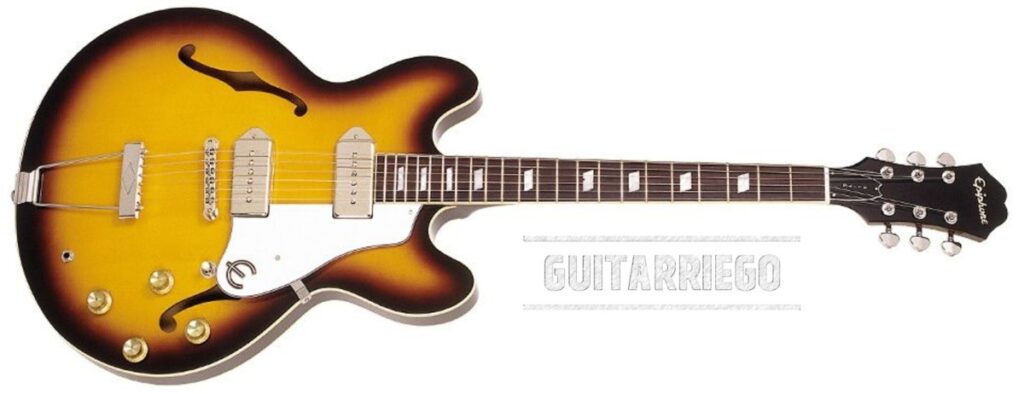
In 1957, Gibson bought its main competitor, Epiphone. Ted McCarty’s original plan was to add Epiphone upright basses to the Gibson product line. Gibson was not interested in making Epiphone instruments. However, Gibson at that time worked with exclusive distributors and official sellers by area. This meant that there were large musical instrument stores to which they could not sell due to an exclusive theme.
Thus, Gibson, in an intelligent business strategy, decided to manufacture and market the Epiphone brand to sell to those businesses that could not sell Gibson products. In this way, although they were not the same models, the Epiphone guitars made in the late 50’s and 60’s were guitars made by Gibson but with the Epiphone brand on the headstock.
If you want to know more, don’t miss our article on the true history of Epiphone guitars.
The Marshall JTM-45 is an imperfect copy of the Fender Bassman Tweed
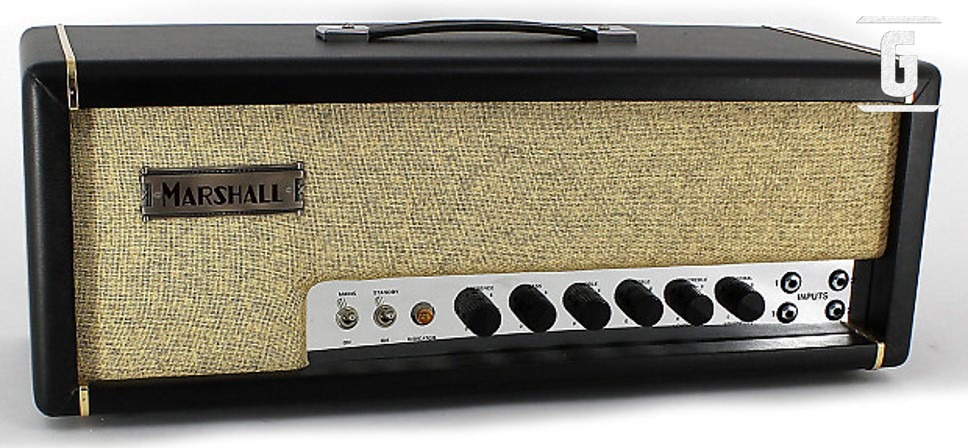
Jim Marshall was a professional English musician -singer and drummer- who had opened a music store that soon became a meeting point for musicians such as Pete Townshend, Ritchie Blackmore, Big Jim Sullivan, Eric Clapton, among others. Given the difficulties of importing guitars and amplifiers from the United States, Jim together with Ken Bran, a repair technician, they decided to make an amplifier. As a base they used a Fender Bassman 4×10 Tweed, using the materials that were available in the UK. Thus, the number 1 Marshall amplifier appears, the JTM-45, one of the most emblematic amplifiers in the history of Rock.
For much of 1985, all Fender guitars were made in Japan.
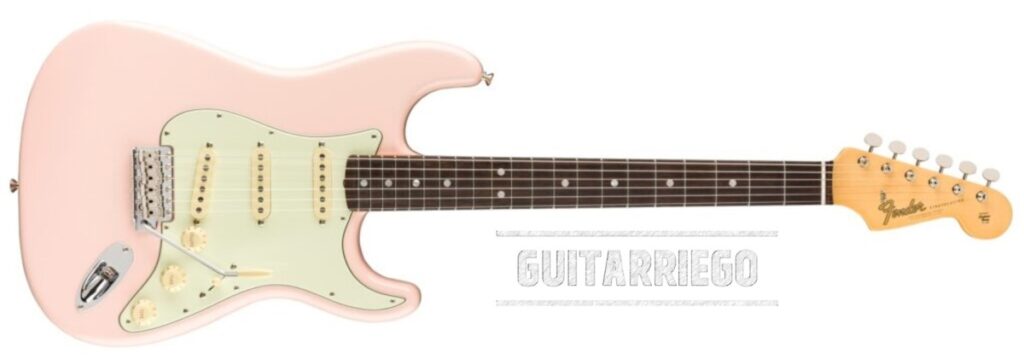
Fender, in the hands of the CBS group, had been suffering a financial crisis in the early 80’s; so the investment group put the company up for sale. So it was that in March 1985, CBS sold the company to a consortium of investors. However, for some reason the Fullerton plant was not included in the sales agreement. This forced the suspension of Fender production in the United States for approximately 8 months. Thus, all Fender guitars and basses that were manufactured between February and October 1985 were made in Japan.
You may be interested in knowing about the history of Squier guitars.
Eric Clapton’s Blackie Strat is a partcaster
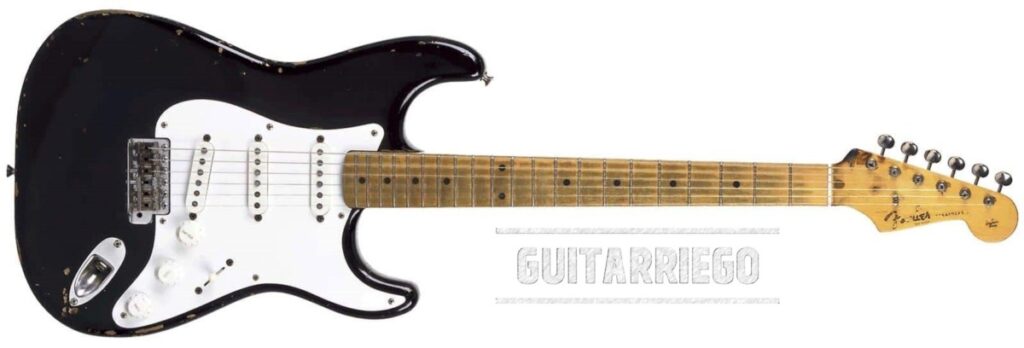
Around 1970, Eric Clapton was in the United States and visited a musical instrument store called Sho-Bud in Nashville, Tennessee. There Slowhand bought six Fender Stratocasters built in the 50’s. At that time, he only paid a price of between $200 and $300 each for the guitars.
Upon his return to England, Eric gave three to George Harrison, Pete Townshend, and Steve Winwood. Then, with the three remaining guitars, Eric Clapton tried and experimented, combining the different parts of each of the guitars. Thus, the Fender Stratocaster Blackie is made with the body of a black ’56 Stratocaster, the neck of a ’57 instrument, and the pickups of the third guitar. Thus Eric Clapton’s Fender Stratocaster Blackie made up for parts from three different vintage guitars, one true Partcaster.
In case you want to know more about the subject, we recommend that you read the history of the Blackie, Eric Clapton’s black Fender Stratocaster.
The Red Special was built entirely by Brian May and his father
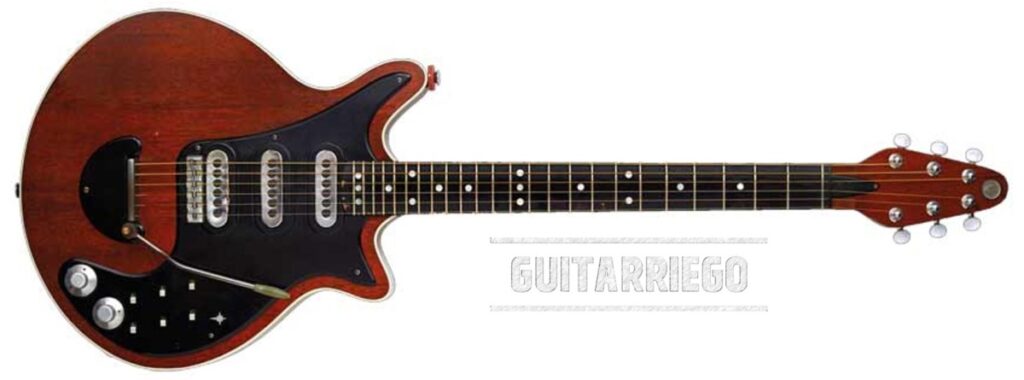
Brian May’s family could not afford to buy an electric guitar. So in August 1963, Brian along with his father Harold May began building an electric guitar. It was all made, except pickups and tuner machines, with recycled materials worked by hand with rudimentary tools by father and son.
Thus, the Red Special is one of its kind, with a neck made from the old, moth-eaten mahogany of an old home’s hearth, oak fretboard painted black to simulate ebony, and a body made from oak, hardboard and decorated with a mahogany veneer. The guitar’s truss rod, tremolo bridge, and other parts were also handcrafted by Brian and Harold May using recycled materials. Today, nearly 60 years later, the Red Special remains Brian May’s number 1 and virtually exclusive guitar, demonstrating superlative build quality.
If you want to know more about this amazing story, visit this note about Brian May’s Red Special guitar.
Fun facts about the electric guitar
We hope you have enjoyed this list of interesting and amazing facts about the history and use of the guitar and that you have learned something new. Although the guitar is one of the most popular instruments in the world, there is still much more to learn and discover about it.
If you liked this post and you want us to continue writing about a particular topic, leave us a comment below. Also, let us know if you knew these fun facts.
You may be interested in this review on the most popular and iconic electric guitars of all time.


